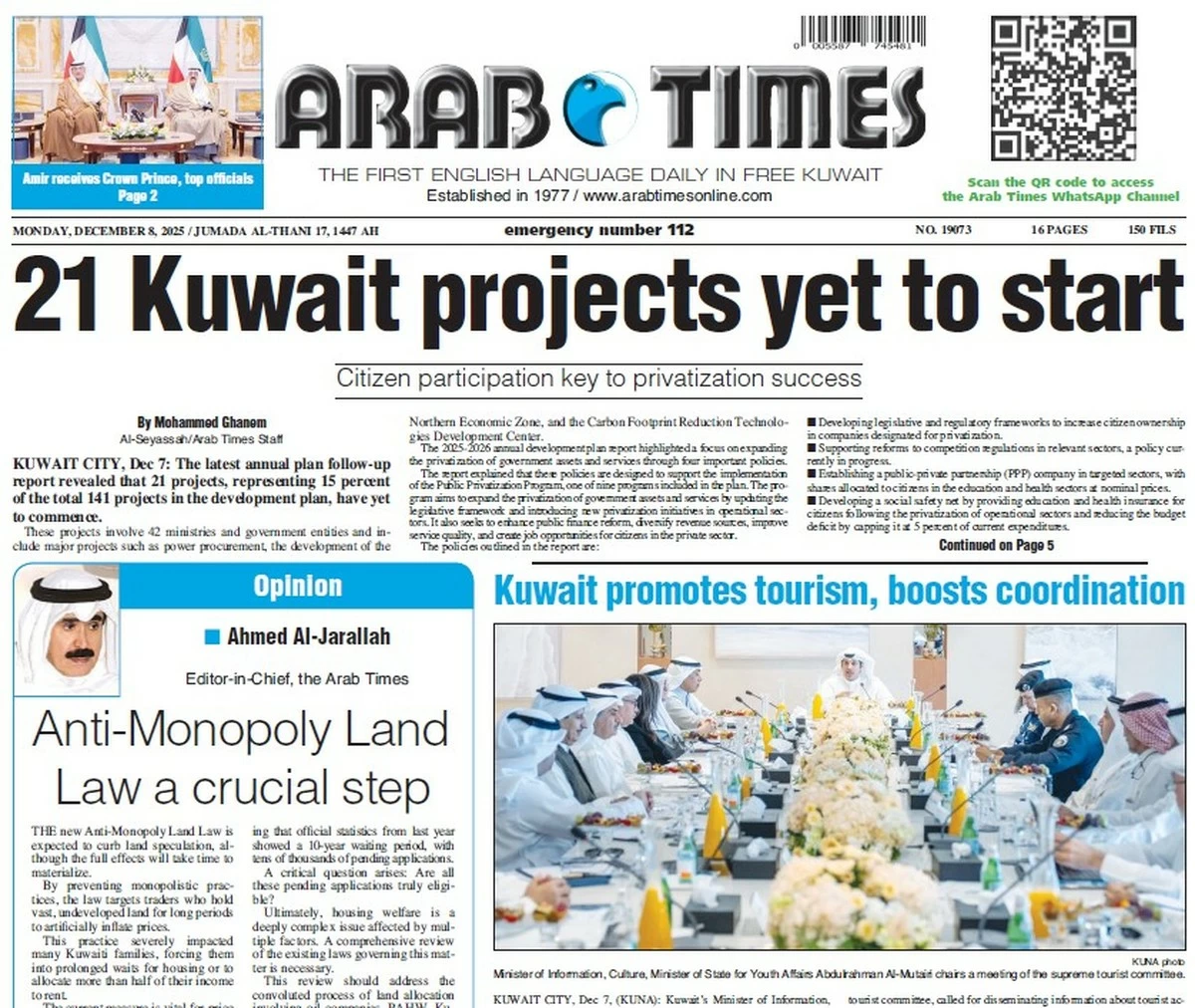27/10/2024
27/10/2024

KUWAIT CITY, Oct 27: Amid increasing media reports about the effects of space weather on our daily lives, the Kuwait Muon Observatory team in the Physics Department of the Faculty of Science at Kuwait University says these phenomena are a natural part of the solar system. In a press release issued by Kuwait University, the team provided a simplified scientific explanation of space weather and highlighted the role of the Kuwaiti observatory in monitoring these phenomena and predicting their effects.
Just as Earth’s weather exhibits seasonal variations, space weather refers to changes occurring in the outer space surrounding Earth due to solar activity. The sun follows an approximately 11-year cycle of solar activity, reaching its peak magnetic activity during this time. At the peak, sunspots, solar flares, and solar storms become more frequent, increasing the likelihood of high-speed charged particles being emitted from the sun. When these particles reach Earth, they can disrupt the magnetosphere that protects the planet, causing temporary disturbances in the Earth’s magnetic field. These solar storms can impact technological systems on Earth, including satellites, communication systems, power plants, and GPS devices. While such effects are rare, they can lead to temporary disruptions. This has prompted scientists to prioritize predicting these storms and implementing necessary precautions to safeguard technology.
For instance, the Kuwaiti satellite team, KuwaitSat 1, continuously monitors space weather and takes necessary measures to protect satellite systems in the event of solar storms. To enhance space weather monitoring, the Kuwait Muon Observatory was established in 2006 under the Department of Physics at Kuwait University. It is part of the Global Muon Detector Network (GMDN), funded by Shinshu University in Japan, which includes similar observatories in Japan, Australia, and Brazil to cover a large part of the globe. The Kuwait Muon Observatory is the largest in the Global Muon Network. It monitors muons, which are particles formed from fragments created by cosmic ray collisions with the Earth’s atmosphere. During a solar storm, the intensity of cosmic rays is affected, which in turn affects the number of muons that reach the Earth’s surface. When the Kuwait Muon Observatory detects such changes, the data is analyzed within the global network, allowing for warnings about major solar storms to be issued several hours before they reach Earth.
This advance notice provides governments and companies with enough time to take necessary precautions, as changes in muon levels precede the arrival of solar storms. The Muon Observatory team understands that some media reports may exaggerate the effects of space weather, especially as the Sun is entering its peak solar activity. However, they stress that space weather is not a threat to humans; rather, it is a natural phenomenon that occurs regularly. The Sun last reached its peak activity in 2014. The team emphasized the importance of understanding space weather as a recurring natural event and highlighted that scientific efforts and international cooperation are vital for the accurate monitoring and prediction of these phenomena


